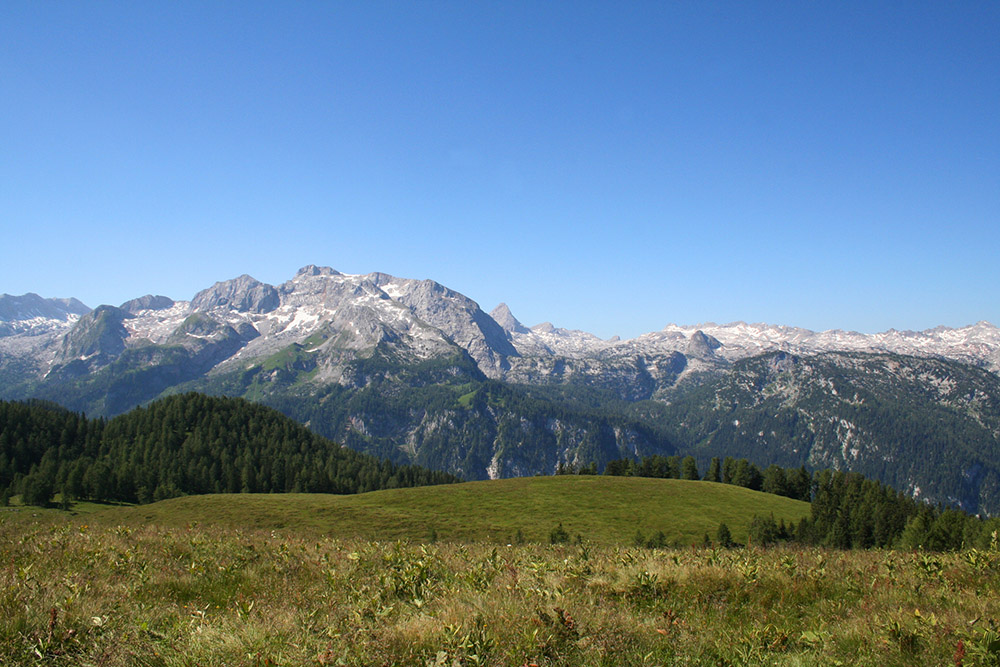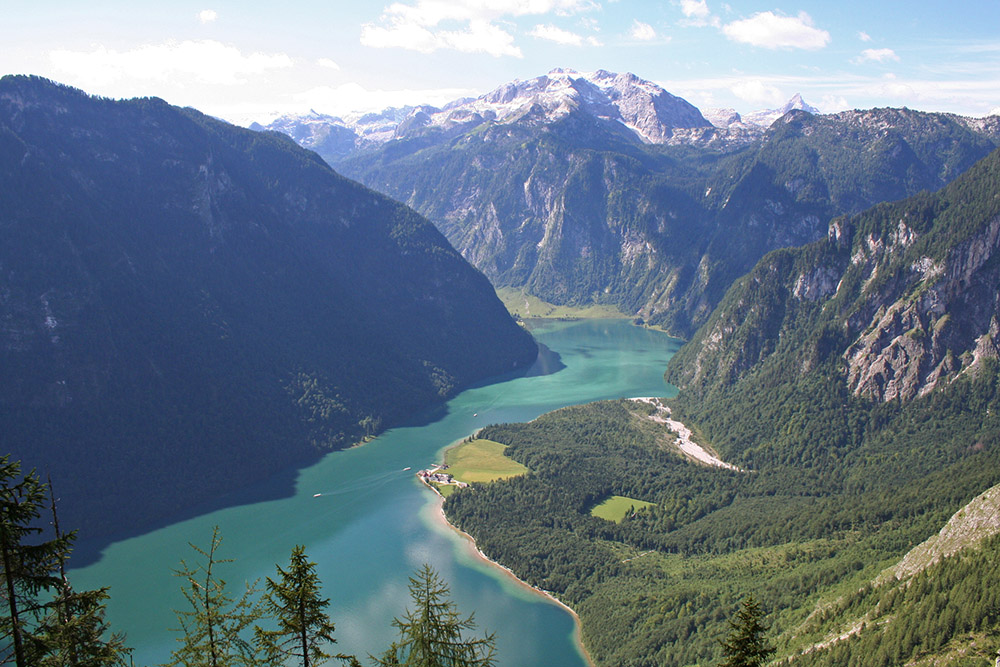Habitats
The Berchtesgaden National Park is part of the Northern Limestone Alps and is home to a mountain nature rich in species on an area of 210 km². Located in the very southeast of Bavaria, it is surrounded on three sides by the Salzburg Limestone High Alps.

Gotzenalm
The protected area extends from the submontane mixed mountain forest stage in the valleys through the montane and high montane mixed mountain forests up to the subalpine spruce-larch forests. Interspersed in these forests are open alpine pastures with flower-rich meadows: A diverse cultural landscape that bears witness to an ancient history that is still alive today. In the subalpine level, the national park preserves the most important larch-mirch forests of the northern eastern Alps.
The subalpine forests change uphill into mountain pine scrub, green alder and willow scrub, dwarf shrub heaths, alpine grass communities and snow valleys. At higher altitudes, scree slopes, boulder heaps, firn fields and the rocks of the summit region follow. In the cirque of the Hochkalter lie the remains of the Blaueis glacier, the northernmost small glacier in the Alps. Scattered in almost all altitudes are different types of moors, springs and streams with typical plant and animal species.

Spruce growth on scorched tree trunk
While the forests of the high altitudes, which are difficult to reach, are still very close to nature, partly preserved like primeval forests, the forests of the easily accessible areas were intensively used for centuries for the extraction of firewood for salt boiling and as hunting grounds - first by the princely princes and later by the Bavarian royal family. Since the establishment of the national park, these forests have been allowed to develop again into natural mixed mountain forests - supported by temporary measures.
With Lake Königssee, the National Park is home to a very special lake: After the large lakes in the foothills of the Alps and Lake Walchen, it has the fifth largest water volume of all Bavarian lakes, but only the tenth largest lake surface area due to its great depth of more than 190 m. This ratio and the fact that all inflows originate from unpopulated mountainous areas guarantee its preservation as a nutrient-poor (oligotrophic) lake with particularly high water quality to this day.
